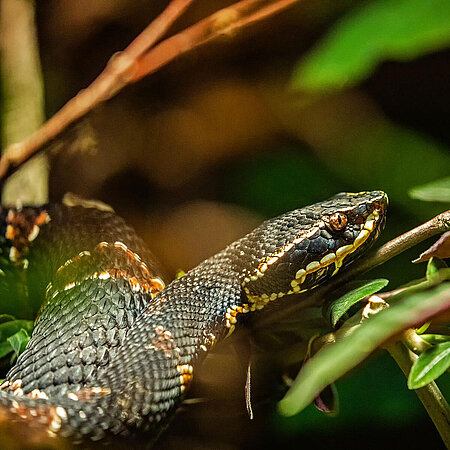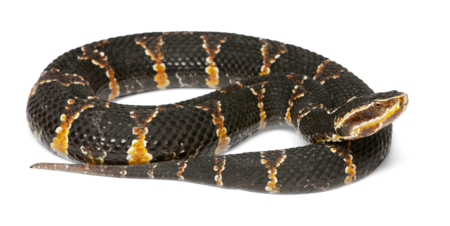Taylor's cantil
Agkistrodon taylori

- Family
- Vipers (Viperidae)
- Habitat
- Wetlands, forests and grasslands
Night hunters
Taylor’s cantils are primarily active at night, but may also move around on heavily overcast days. Despite the darkness, they hunt with astonishing precsion. They achieve this by using a heat-sensitive pit organ located between the eye and nostril on both sides of the head. The pair of pits acts as infrared heat receptors, which the viper uses to create a three-dimensional thermal image of the environment and detect warm-blooded prey.

Egg or live young?
Like many vipers, Taylor’s cantils are ovoviviparous. The baby develops inside an egg, which the female retains inside her body until it hatches shortly after or during egg laying – giving the appearance of live birth. This type of brood care protects the eggs from external influences and predators. However, the complex nature of this type of reproduction produces fewer offspring.
The Taylor’s cantil was first recognised as a separate species in the year 2000. Prior to this, it was considered a subspecies of the Mexican cantil.
Distribution
